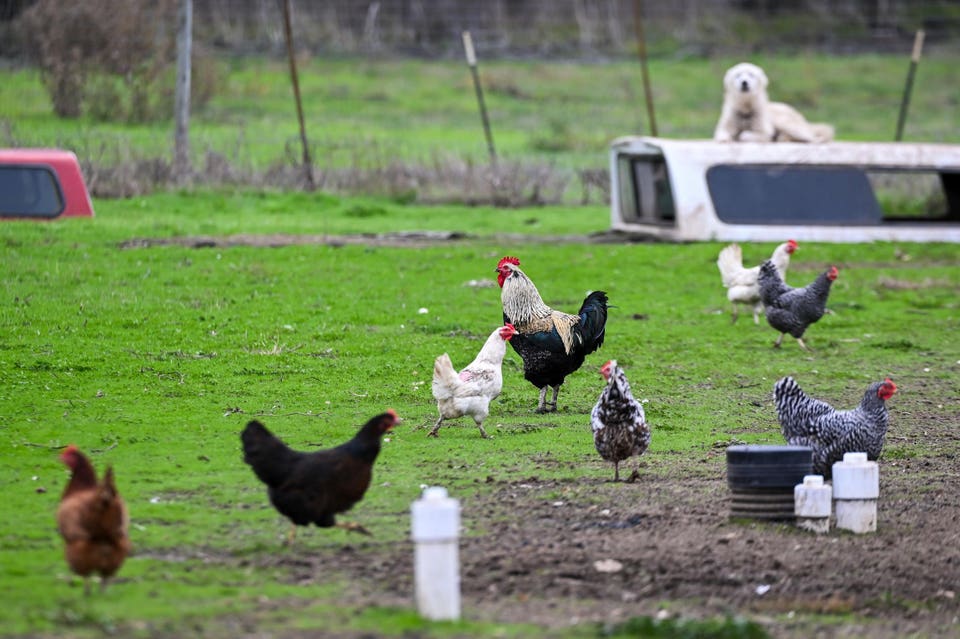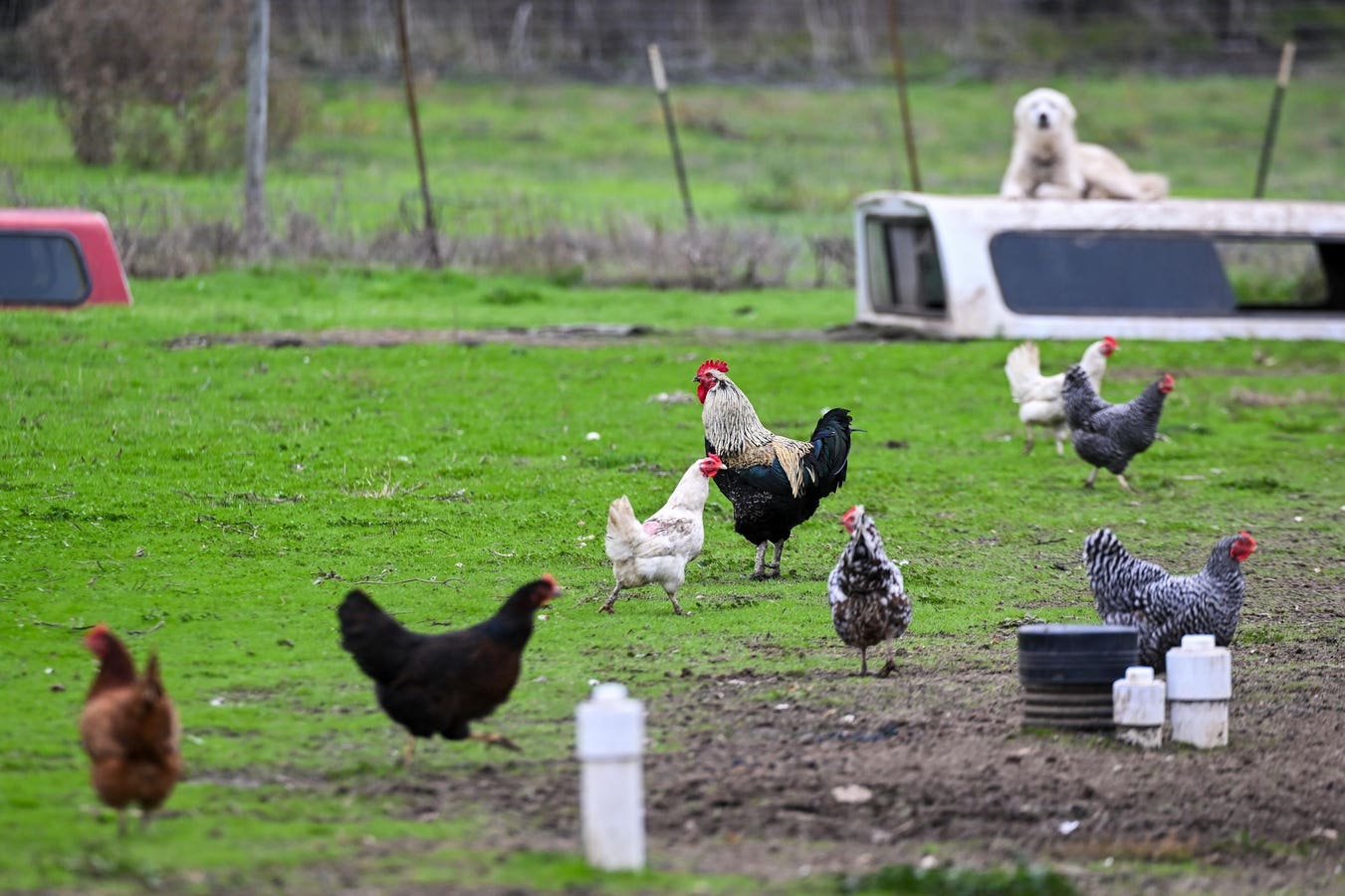
PESCADERO, CALIFORNIA – DECEMBER 20: A view of chickens and a rooster at a farm as California declares state of emergency to prevent new public health crisis on Bird flu in Pescadero, California, United States on December 20, 2024. (Photo by Tayfun Coskun/Anadolu via Getty Images)
Anadolu via Getty Images
A Washington resident has been hospitalized with a strain of bird flu that has not been seen in humans before, according to the Washington State Health Department.
Since 2024, there have been 70 reported human cases of bird flu in the United States, all occurring from the highly pathogenic H5N1 strain of the bird flu. The case at hand in the Washington state resident resulted from infection of the H5N5 strain of the bird flu, making it the first human case reported in the United States. The H5N5 strain is not believed to be a greater threat to human health than the more common H5N1 strain.
The Washington resident was an older adult with chronic medical conditions who was exposed to wild birds from a backyard flock, according to CBS news. The patient developed high fever, confusion and respiratory distress, according to Scripps News.
Of the now 71 cases that have occurred since 2024, only 1 individual has died, and the overall risk to the public is considered low, according to the CDC. Here’s what to know about the bird flu.
How Does It Spread?
Most cases of bird flu occur from direct contact with infected animals, mainly poultry and dairy cattle. Humans can acquire the infection when they interact with bodily fluid of infected animals such as saliva, feces and respiratory droplets. Humans can introduce the virus into their body by touching these bodily fluids with their hands and then touching their eyes, nose or mouth. In addition, people can become infected by inhaling small dust particles in animal habitats where the virus lives.
Should We Be Worried About A Future Pandemic?
It would be highly unlikely for the bird flu to reach pandemic potential, particularly because there have been no cases of sustained human-to-human transmission of the virus in the United States. This would be necessary, as it was for the COVID-19 pandemic, in order for a pandemic to occur. This is one among many reasons a future pandemic is unlikely to occur.
However, this does not mean a future pandemic couldn’t occur, since viruses mutate randomly. In theory, the bird flu virus could mutate, allowing it to infect human hosts more efficiently and spread, causing more sustained human-to-human transmission. This is precisely why the bird flu situation needs to be monitored closely by the CDC and other federal health agencies.
Of note, the Trump administration recently cancelled plans to develop a bird flu vaccine, citing safety concerns on the mRNA technology being used. This would effectively make the United States less pandemic ready, in the even the bird flu started to spread more rapidly among humans.
How Can The Public Stay Safe?
The best way to avoid being infected with bird flu is to avoid direct interaction with wild birds , poultry and dairy cattle. The CDC also recommends those that have to work with animals wear personal protective equipment like gloves, goggles and appropriate masks such as N-95 or KN-95 masks to decrease the chance of breathing in virus particles. Disinfecting areas exposed to bird feces with bleach or a commercial disinfectant like Lysol spray can also mitigate the spread of the virus. Finally, washing hands for at least 20 seconds regularly should be regular practice for farmers and those handling animals that are at high risk for having bird flu.

